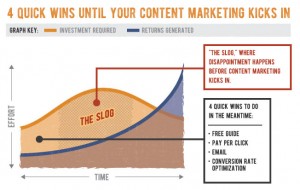
This question hit my inbox last week:
As a leader, how can I coach and lead, without “micromanaging”? I know it’s a fine line, and I’d love your tips.
Most leaders face the delicate balancing act described in this email. How do you hold your team accountable to high standards, help them make the right decisions, and coach toward results without making them feel like you’re looking over their shoulder? How do you create trust and accountability at the same time?
One of the most challenging aspects of a leader’s job is performance management. And it shows. The latest Modern Survey data on engagement shows that only 13 percent of the U.S. workforce is fully engaged. More than half of the workforce is under engaged or disengaged. Most organizations are leaving a ton of potential on the table. That’s a problem that managers can solve by setting clear expectations, removing barriers and developing people to unleash their full potential.
Here are a few thoughts on mastering the management balancing act:
Set clear expectations.
In a healthy, high-performing workplace, employees never feel like they’re being micromanaged. They’re being developed and put in a position to contribute their full potential. Employees have a crystal-clear understanding of their goals and their manager’s expectations. They expect frequent, scheduled conversations about performance and accountability. Top performers typically welcome performance feedback, coaching and development. If employees know what to expect, check-ins about their performance aren’t stressful or surprising — they’re just a tool to help everyone get better and take progress toward meaningful results.. Modern Survey research has repeatedly found that having opportunities for growth and development is a leading driver of employee engagement, especially among Gen Y employees.
Go first.
This is the advice I give most often to leaders: Go first. Before you set expectations for others, tell them what they can expect from you. Define what you’re going to contribute, how you’re going to help your team and how your own performance will be measured. Then deliver on those promises consistently. Set the pace.
When people understand what they can expect from you, they’ll be more motivated to return the favor and help the team win.
Consistency and clear communication create trust. Trust is so critical to a healthy culture, and most organizations today are facing a trust deficit. According to recent Modern Survey research, only 50% of employees say they trust their organization’s senior leadership. And that number drops even lower when you look at larger organizations: Only 40% of employees at organizations with 10,000 employees or more trust senior leadership.
In the absence of trust, organizations will never perform at their full potential.
Have more frequent check-ins.
Planning a once-a-year performance review is overwhelming and, let’s be honest, not very effective. Instead, stay in touch with your people. Have short meetings more often. Keep the lines of communication open. Make meetings a useful two-way conversation. Get candid, one-on-one feedback. Provide corrective action. Help your people realize their full potential. Find ways to eliminate the obstacles that are holding them back. Create an environment that welcomes healthy, candid, “courageous” conversations.
Consistency counts.
When it comes to managing performance, consistency is everything. I’ve found that the more employees are armed with information and clear expectations, the less a leader is tempted to micromanage. Set the standards and follow through. If your expectations change or the business shifts, communicate those changes to your team. It’s a leader’s job to create a culture of performance, remove barriers and help people contribute in a meaningful way. When improvement and feedback are embedded into the culture, micromanagement isn’t necessary.
When you set clear expectations and help your team achieve them, everyone wins.
I experienced these lessons working for my best boss. He was the kind of extraordinary leader that showed up ready to make an impact every day.
Who did you impact today? How will you be remembered by the people you worked with today?
Those are self assessment questions worth considering. Leaders go first!
Check out the video below for 5 more leader tips about creating a high performance culture:
Business & Finance Articles on Business 2 Community
(75)







